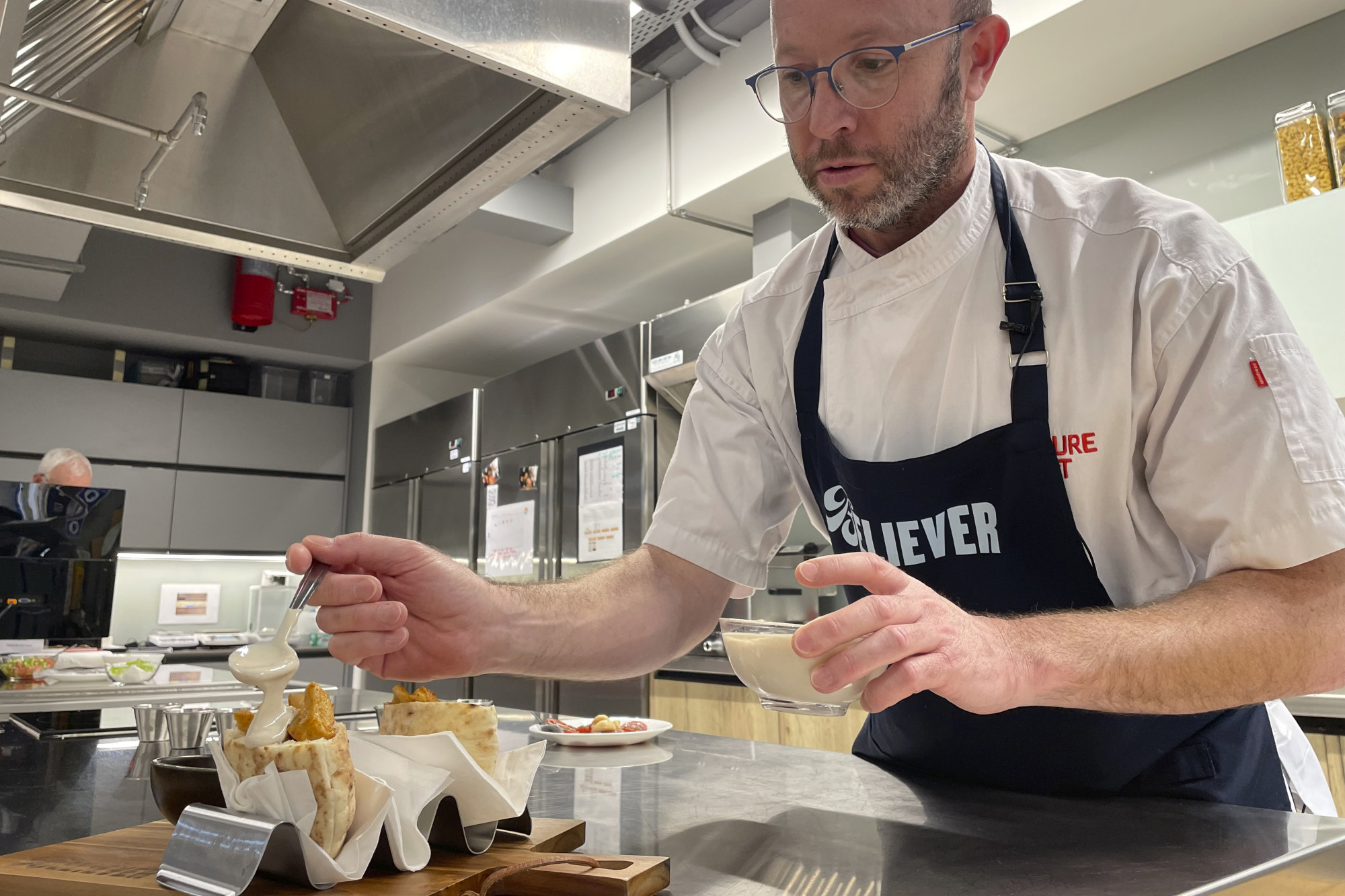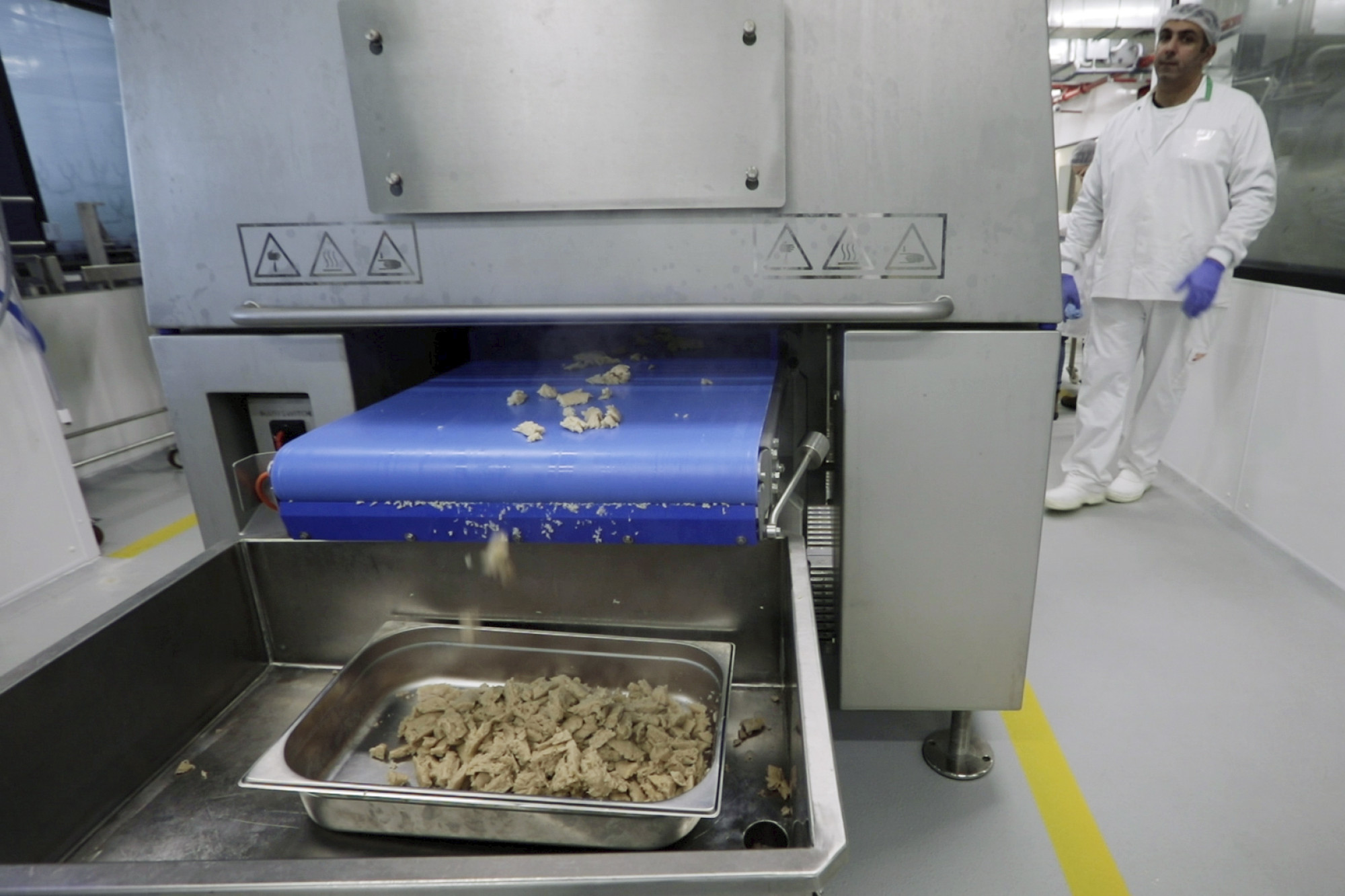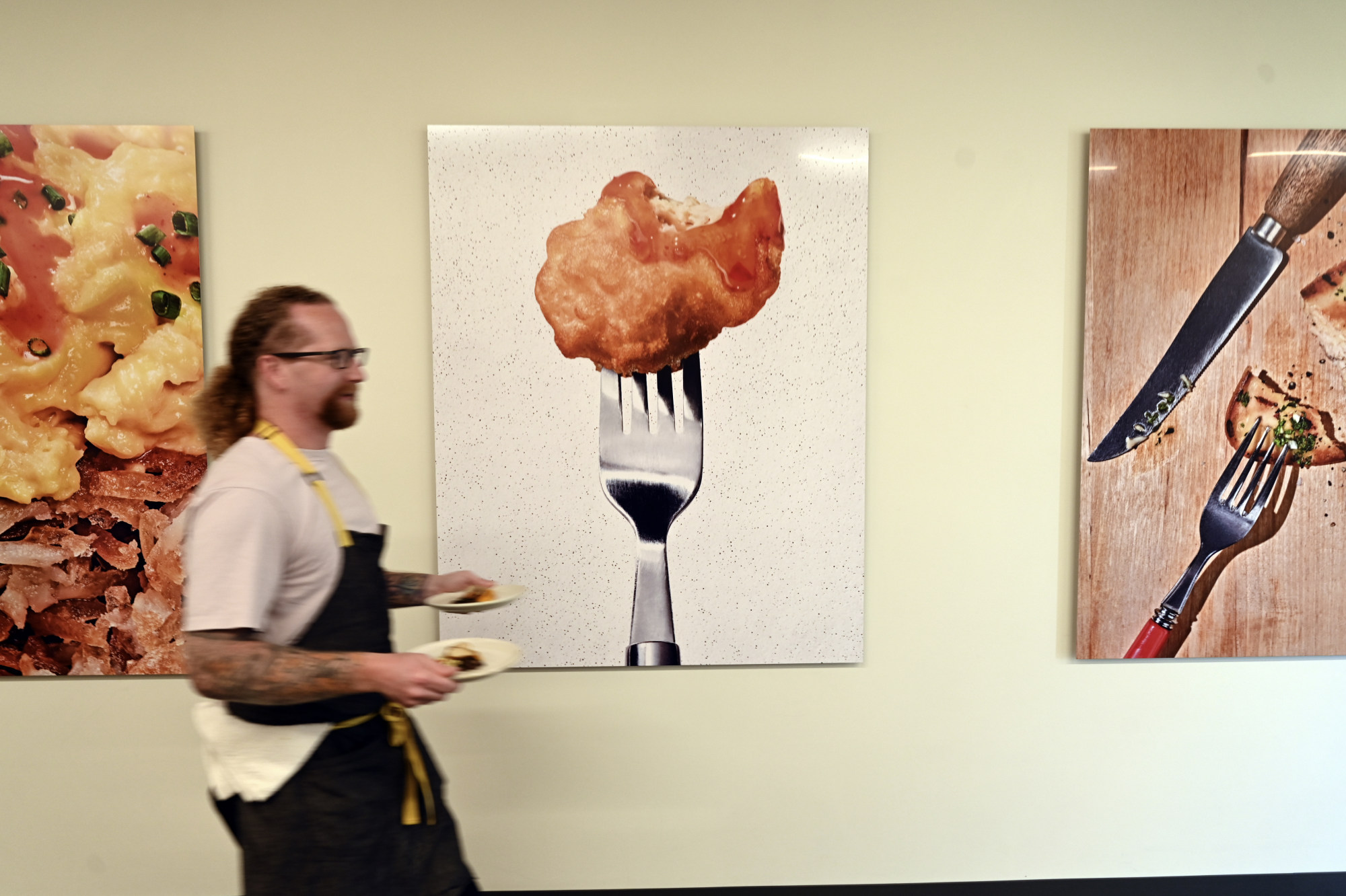
A familiar aroma wafted through the Believer Meats test kitchen as research and development chef Andres Voloschin flipped sizzling strips of chicken made from cells.
Scientists produced this chicken. More than 150 start-ups are chasing an ambitious goal: meat that doesn’t require raising and killing animals, that is affordable, and tastes and feels like the meat we eat now.
They are part of an industry aiming to use cellular biology to reduce the environmental impact of the world’s ever-increasing demand for meat, and change global protein production.
“We are addicted to meat as a species. It’s part of our evolution. It’s part of our culture,” said Believer founder Yaakov Nahmias. But, he says, “we thought about quantity rather than the environment, rather than sustainability”.

Believer Meats research and development chef Andres Voloschin works on dishes made from the company’s products at a test kitchen in Rehovot, Israel. Photo: AP
Companies making so-called cultivated or cultured meat, which is also popularly known as lab-grown meat, are trying to scale up quickly – partnering with traditional meat companies, drawing more investors and breaking ground on new production facilities.
Wide adoption of meat from cells is nowhere near assured, however. It is expensive to make and there are challenges, such as learning how to mimic the complex structure of steak. Government regulation is another obstacle. Only Singapore and the United States allow the sale of cultivated meat.
And while many people who have tried it say they like it, others find the idea distasteful. A recent opinion poll found that half the adults in the US would be unlikely to try it. Most of those who said they wouldn’t said “it just sounds weird”.
Even Nahmias’ 10-year-old son Oren says he will only eat traditional meat. “I feel bad” for the animals, he said, “but they are yummy!”
The science behind this new meat comes from the medical world. The process starts with cells. The cells may come from a piece of tissue, a fertilised egg or a cell “bank”. Scientists choose cells that can self-renew and turn into the muscle and fat cells that make up meat tissue. From starter cells they create “cell lines” so they don’t have to keep going back to animals.
These cells are placed inside vessels called bioreactors and bathed in a nutrient-rich broth where they multiply. Thick, structured meat requires a scaffold that helps cells organise into a shape.

Cultivated “chicken” is processed at the Believer Meats facility in Rehovot, Israel. Photo: AP
Changes in the composition of the broth, or medium, and cues from the scaffolding, tell immature cells to turn into muscle, fat or connective tissue.
Producing meat this way could dramatically reduce the impact on the environment because it would reduce the need for land for the animals and for feed.
“The most important thing is that this field moves forward and starts reducing the destruction to our environment associated with current animal agriculture techniques,” said Glenn Gaudette, a biomedical engineering specialist at Boston College.
But transforming the ecosystem is a distant vision. Scientists and industry experts say cultivated meats have a way to go before they’re indistinguishable from conventional meats, especially when it comes to the texture of products other than burgers or nuggets.

Chef Zach Tyndall carries plates of cultivated chicken at Good Meat’s headquarters in California, the US. Photo: AP
There are other hurdles. Scientists are still trying to find the best scaffolds for structured meat, which must include a way for oxygen to get to all the cells. Options include animal-based scaffolds such as gelatin and, increasingly, decellularised vegetables like spinach.
Experts expect scientists to overcome the remaining scientific hurdles. But they say shaping human perception may be more difficult.
Most people connect meat production with farms rather than science labs – which influences how they view these new products.
In the recent opinion poll, just 18 per cent of US adults said they are extremely or very likely to try cultivated meat, and 30 per cent said they are somewhat likely. Those under 45 years old are more likely than older adults to try it and men are more likely than women.

Inside the Believer Meats lab in Rehovot, Israel. Photo: AP
When those unlikely to try it were asked to choose from a list of reasons why, half said they didn’t think it would be safe.
That’s a concern for respondent Nora Bailey, 31, a mother of three in rural Arkansas.
“I would obviously want to do more research as far as the long-term effects”, since early products deemed safe may later be found to be unsafe, she said.
A World Health Organization report noted several potential safety issues, such as microbial contamination at various points in the process, biological by-products and scaffolding that some people might be allergic to.
Experts acknowledged a lot more safety testing is needed but noted that conventional meat carries significant food-safety risks, such as potential bacterial contamination during slaughter.

Darren Long (left) and Gerard Chia sample lab-cultivated chicken from Good Meat during a tasting at Huber’s Butchery, in Singapore. Photo: AP
At this point, relatively few people have tried cultivated meat. But since its approval in the US this summer, a small number of diners are eating it for the first time at particular restaurants and special events.
People who recently tried cultivated chicken at US company Good Meat’s headquarters in Alameda, California, said they liked it and would eat it again.
Karen Hunt, who joined the taste test because she works nearby, said she wasn’t bothered by how it’s made, especially when she thinks about traditional chicken.
“When you bite into it, it was moist. It wasn’t dry. It did have that kind of feel of chicken, taste of chicken,” she said. “I was pleasantly surprised, and it tasted great.”
News Related